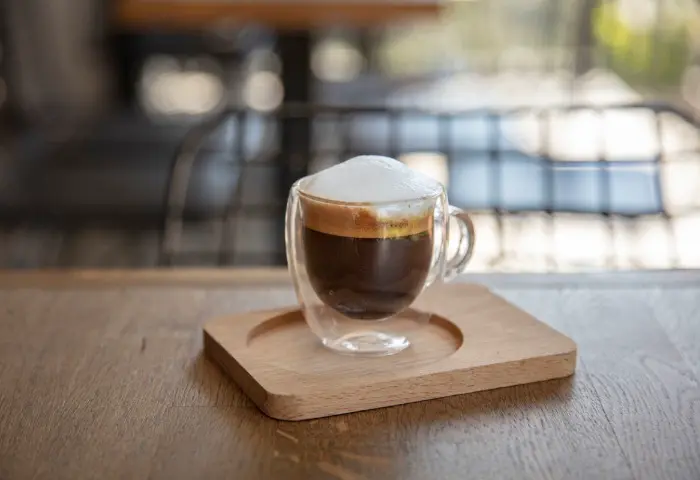Many coffee lovers wonder whether espresso or regular coffee has more caffeine. The answer isn’t as simple as it seems. While espresso is stronger in flavor, caffeine content depends on serving size, brewing method, and bean type. In this article, we’ll break down the differences and help you understand which one packs a bigger caffeine punch.
What Is Espresso
Espresso is a concentrated coffee brewed by forcing hot water through finely-ground coffee beans under high pressure. It has a rich, bold flavor and a creamy layer called “crema.” A standard shot of espresso (about 1 ounce) contains roughly 63 mg of caffeine.
How Espresso Is Made
Espresso machines use 9-10 bars of pressure to extract coffee quickly (in 25-30 seconds). The fine grind and high pressure create a strong, intense drink. Because it’s served in small amounts, people often assume it has more caffeine than regular coffee—but that’s not always true.
What Is Regular Coffee
Regular coffee, often called drip coffee, is made by steeping coarser grounds in hot water. Brewing methods include drip machines, French press, pour-over, and cold brew. A standard 8-ounce cup of drip coffee contains about 95 mg of caffeine.
Brewing Methods Matter
Drip Coffee: Uses gravity to pass water through grounds, extracting caffeine gradually.
French Press: Steeps coffee in water for several minutes, leading to higher caffeine content.
Cold Brew: Brews for 12-24 hours, resulting in a smoother but highly caffeinated drink.
Caffeine Comparison: Espresso vs. Coffee
Per Serving
Espresso (1 oz / 30 ml): ~63 mg caffeine
Drip Coffee (8 oz / 240 ml): ~95 mg caffeine
At first glance, drip coffee has more caffeine per cup. But espresso is more concentrated—meaning you get more caffeine per ounce.
Per Ounce
Espresso: ~63 mg per ounce
Drip Coffee: ~12 mg per ounce
If you compare them ounce-for-ounce, espresso has significantly more caffeine.
Total Consumption
Most people don’t drink just one ounce of coffee. A typical coffee drinker might have:
1 shot of espresso (1 oz): 63 mg
1 cup of drip coffee (8 oz): 95 mg
But if you drink a double espresso (2 oz), you’re getting ~125 mg—more than a standard cup of coffee.
Factors Affecting Caffeine Content
Coffee Bean Type
Robusta beans have nearly twice the caffeine as Arabica beans. Many espresso blends use Robusta for extra kick.
Roast Level
Contrary to popular belief, dark roast coffee has slightly less caffeine than light roast because longer roasting breaks down caffeine molecules.
Grind Size
Finer grinds (like espresso) extract more caffeine quickly. Coarser grinds (like French press) release caffeine more slowly.
Brew Time
Espresso: 25-30 seconds (quick extraction)
Drip Coffee: 4-6 minutes (more caffeine extracted over time)
Cold Brew: 12-24 hours (highest caffeine concentration)
Common Misconceptions
Myth 1: Espresso Always Has More Caffeine
Not true—it depends on serving size. A single shot has less caffeine than a full cup of coffee.
Myth 2: Dark Roast = More Caffeine
Actually, light roasts retain slightly more caffeine.
Myth 3: A Stronger Taste Means More Caffeine
Flavor intensity doesn’t always correlate with caffeine content. Cold brew tastes smooth but can be very high in caffeine.
Conclusion
Espresso is more concentrated, but regular coffee usually contains more caffeine per serving. If you want a quick, strong dose, espresso is great. If you prefer sipping a larger drink with more caffeine overall, drip coffee wins. Ultimately, the choice depends on your taste and caffeine needs. Now that you know the facts, you can enjoy your coffee—or espresso—with confidence!
Related topics:
How To Make Aeropress Espresso?
How to Make Iced Espresso Drinks?
How to Make Great Espresso at Home ?


